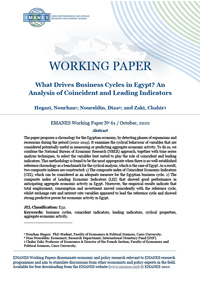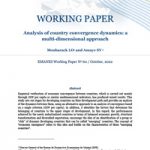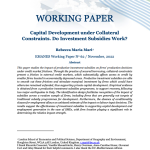
EMANES Working Paper No 61
The paper proposes a chronology for the Egyptian economy, by detecting phases of expansions and recessions during the period (2002-2019). It examines the cyclical behaviour of variables that are considered potentially useful in measuring or predicting aggregate economic activity. To do so, we combine the National Bureau of Economic Research (NBER) approach, together with time series analysis techniques, to select the variables best suited to play the role of coincident and leading indicators. This methodology is found to be the most appropriate when there is no well-established reference chronology as a benchmark for the cyclical analysis, which is the case of Egypt. As a result, two composite indexes are constructed: 1) The composite index of Coincident Economic Indicators (CEI), which can be considered as an adequate measure for the Egyptian business cycle. 2) The composite index of Leading Economic Indicators (LEI) that showed good performance in anticipating aggregate economic activity in Egypt. Moreover, the empirical results indicate that total employment, consumption and investment moved coincidently with the reference cycle, whilst exchange rate and interest rate variables appeared to lead the reference cycle and showed strong predictive power for economic activity in Egypt.





